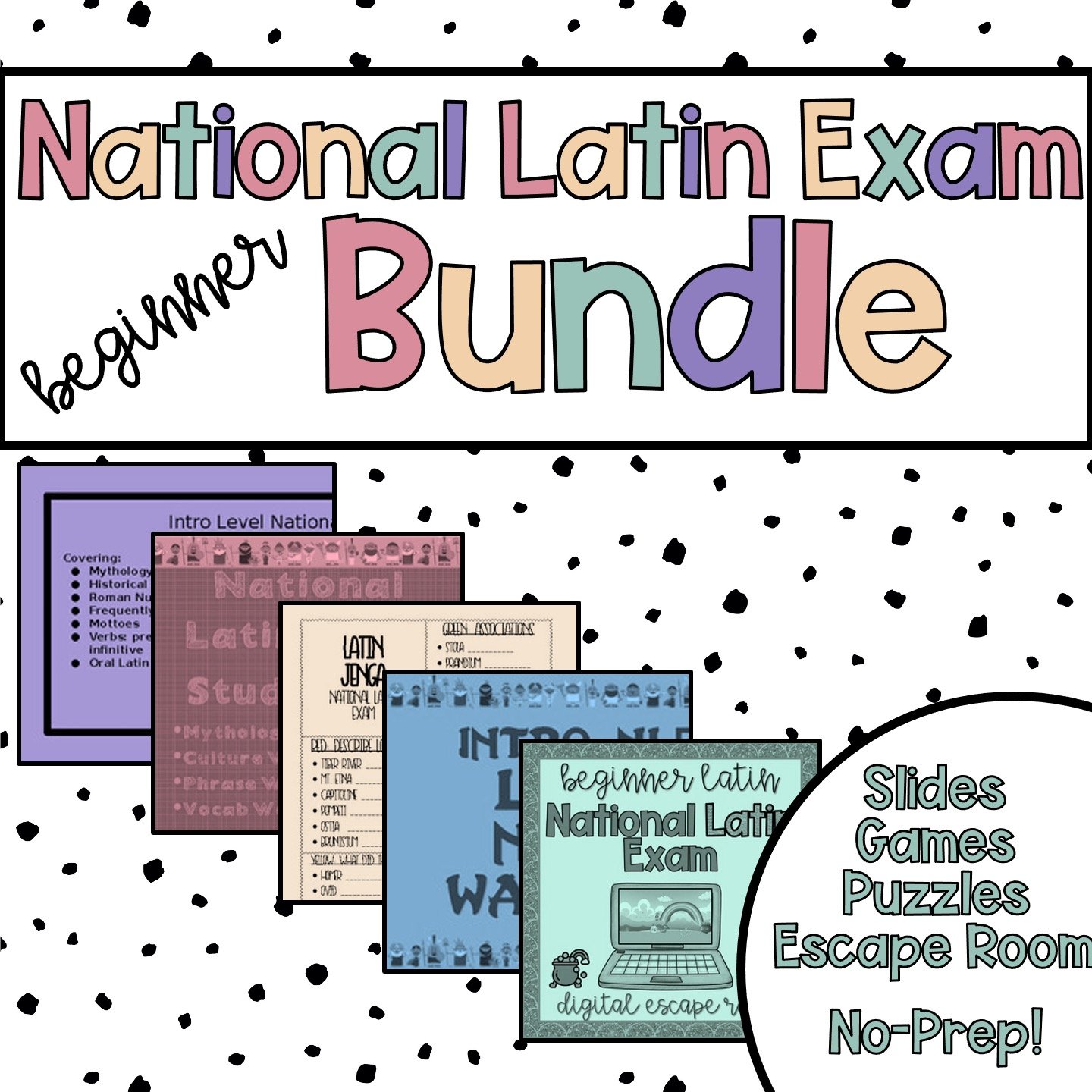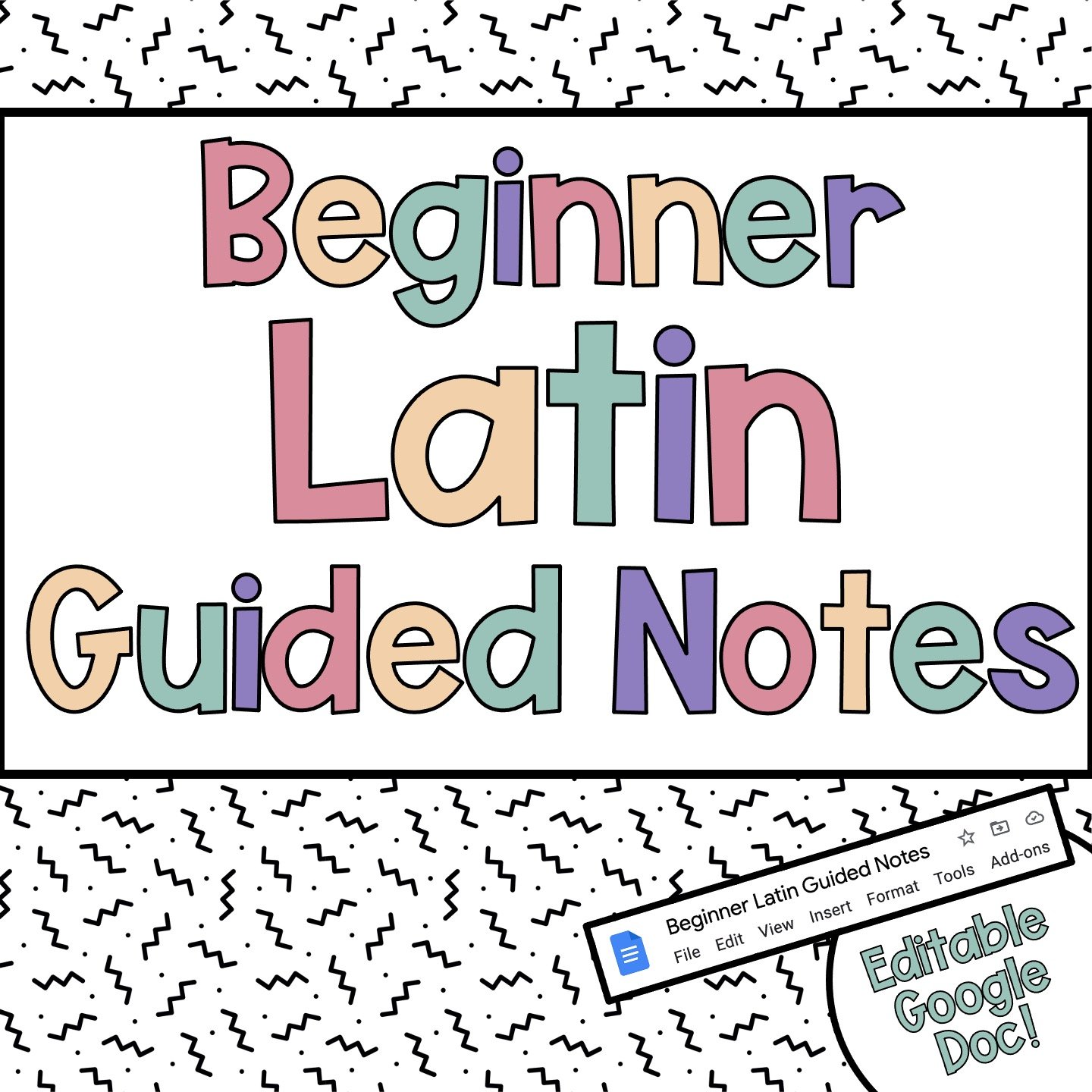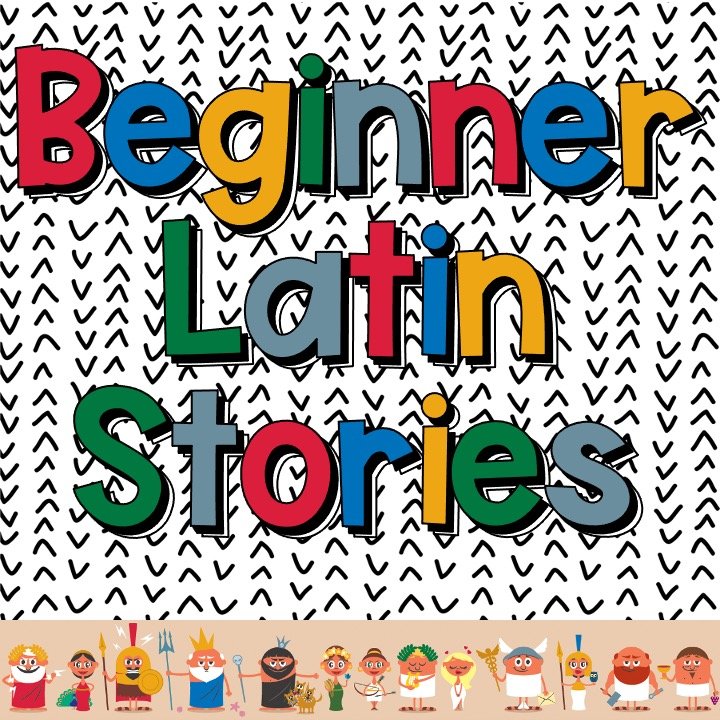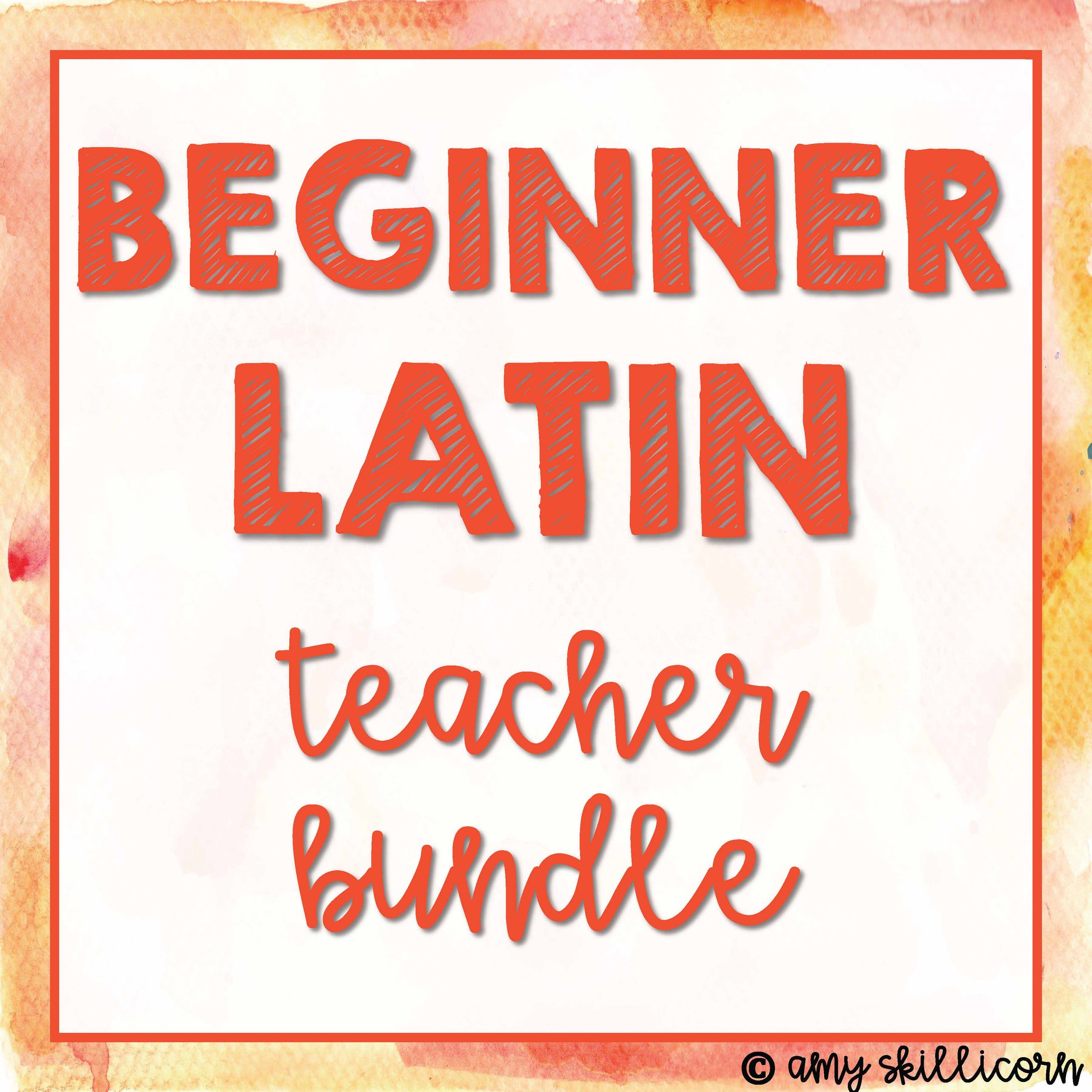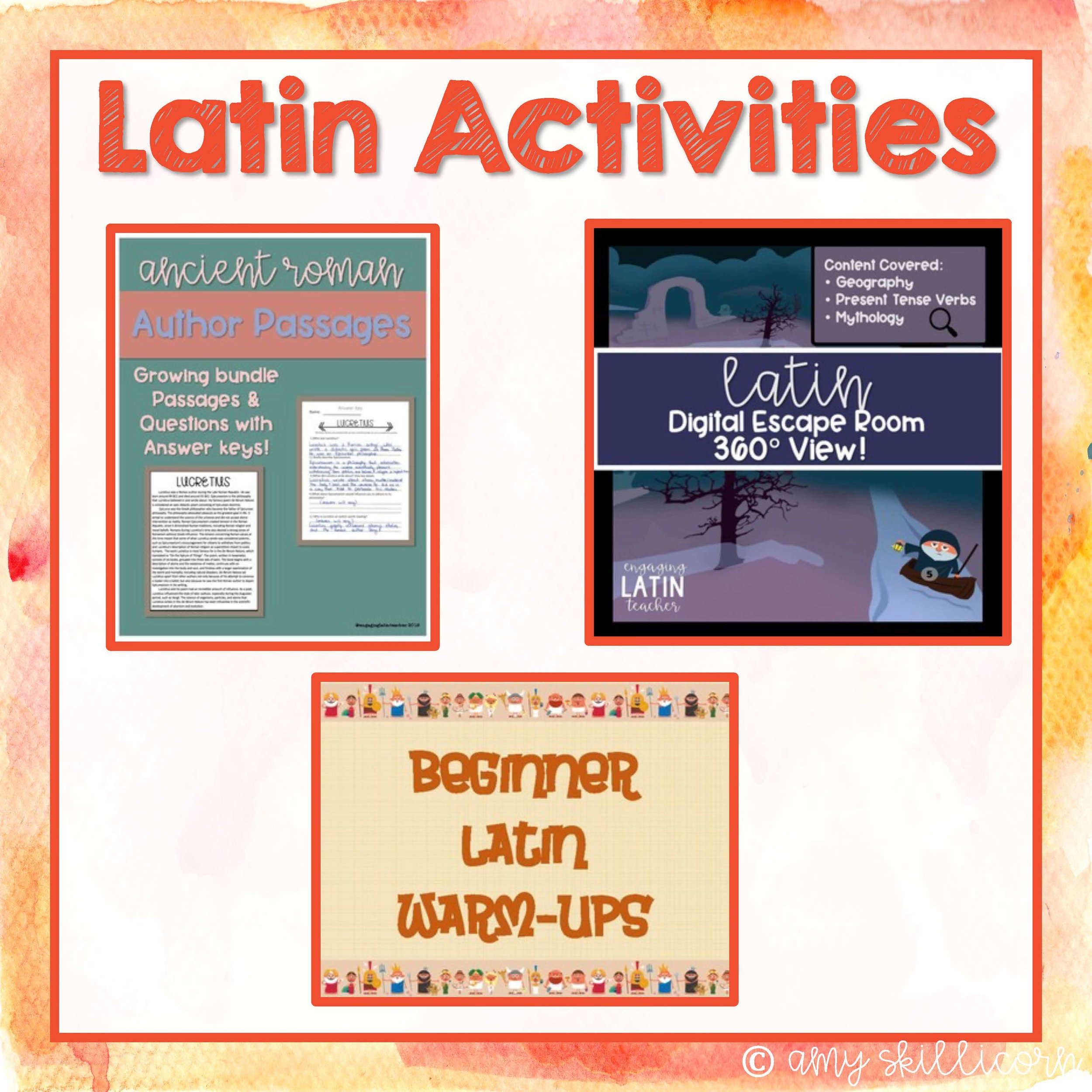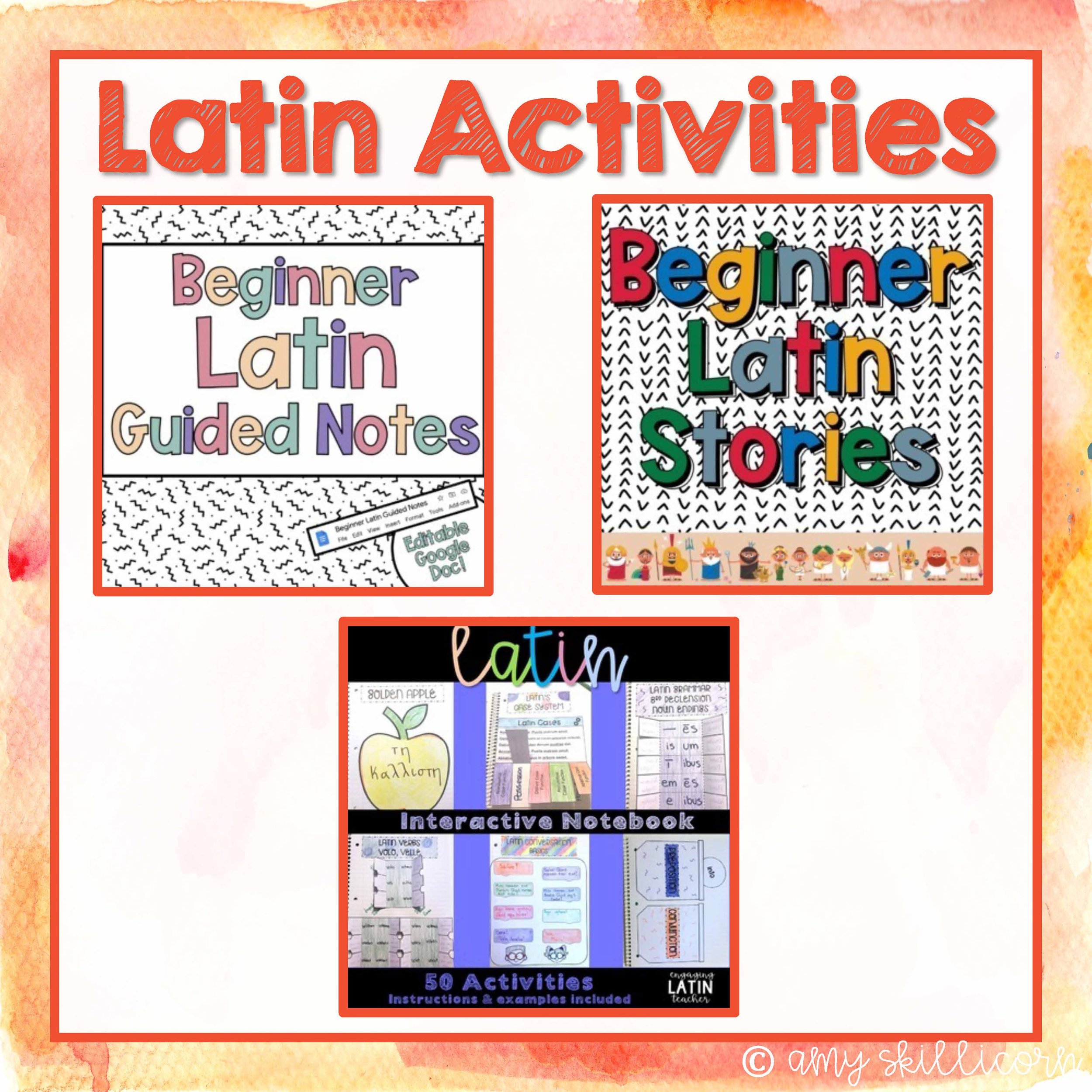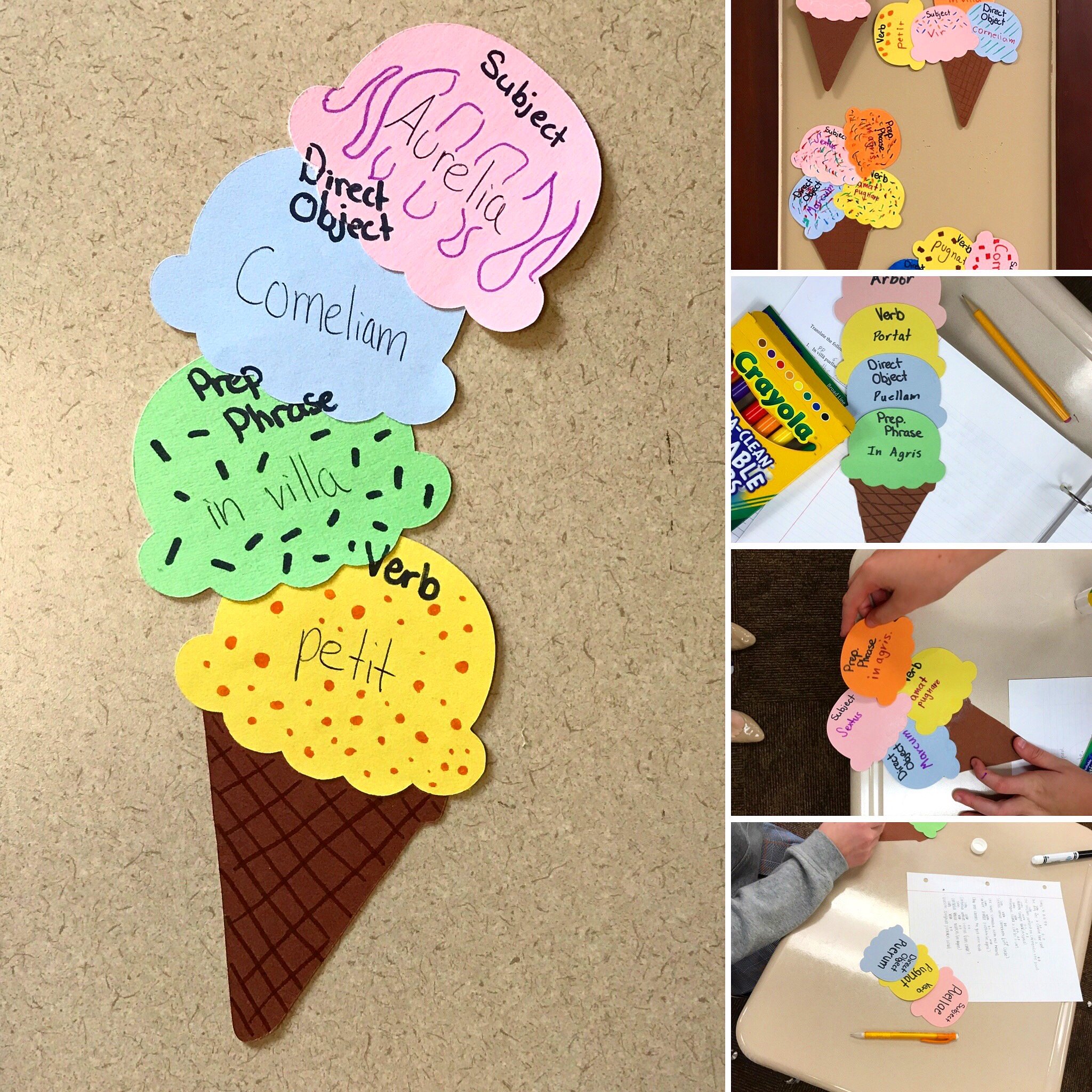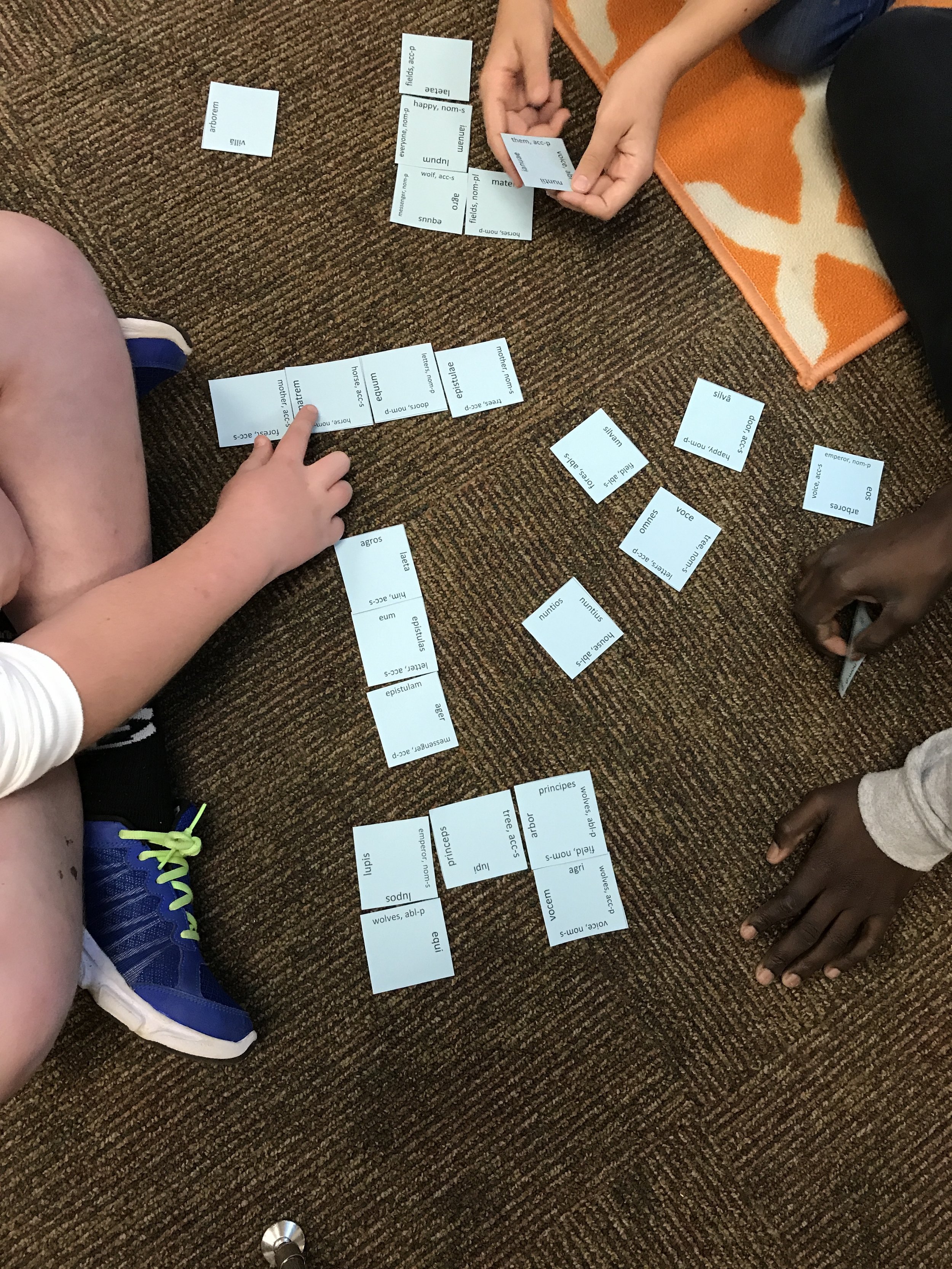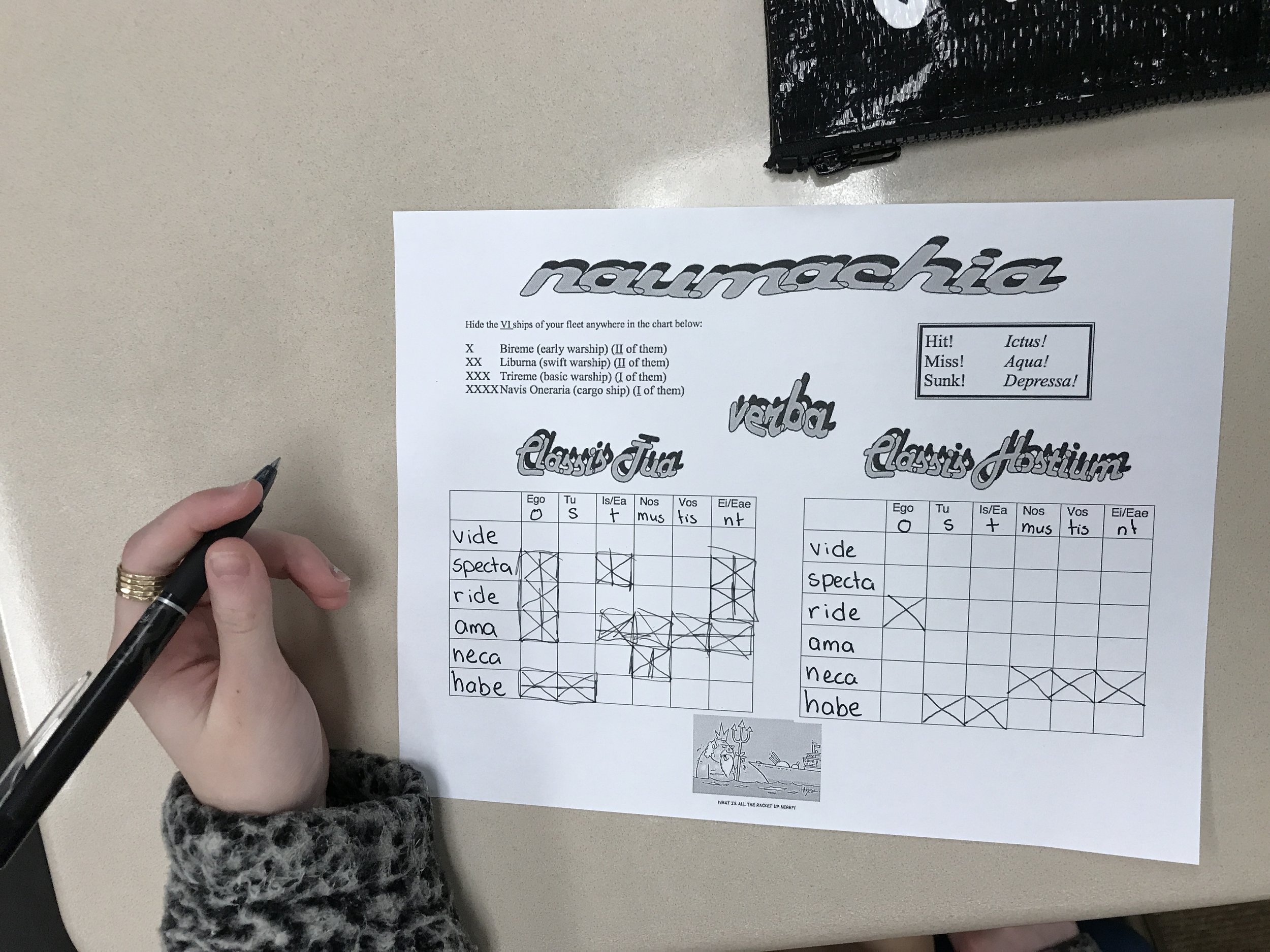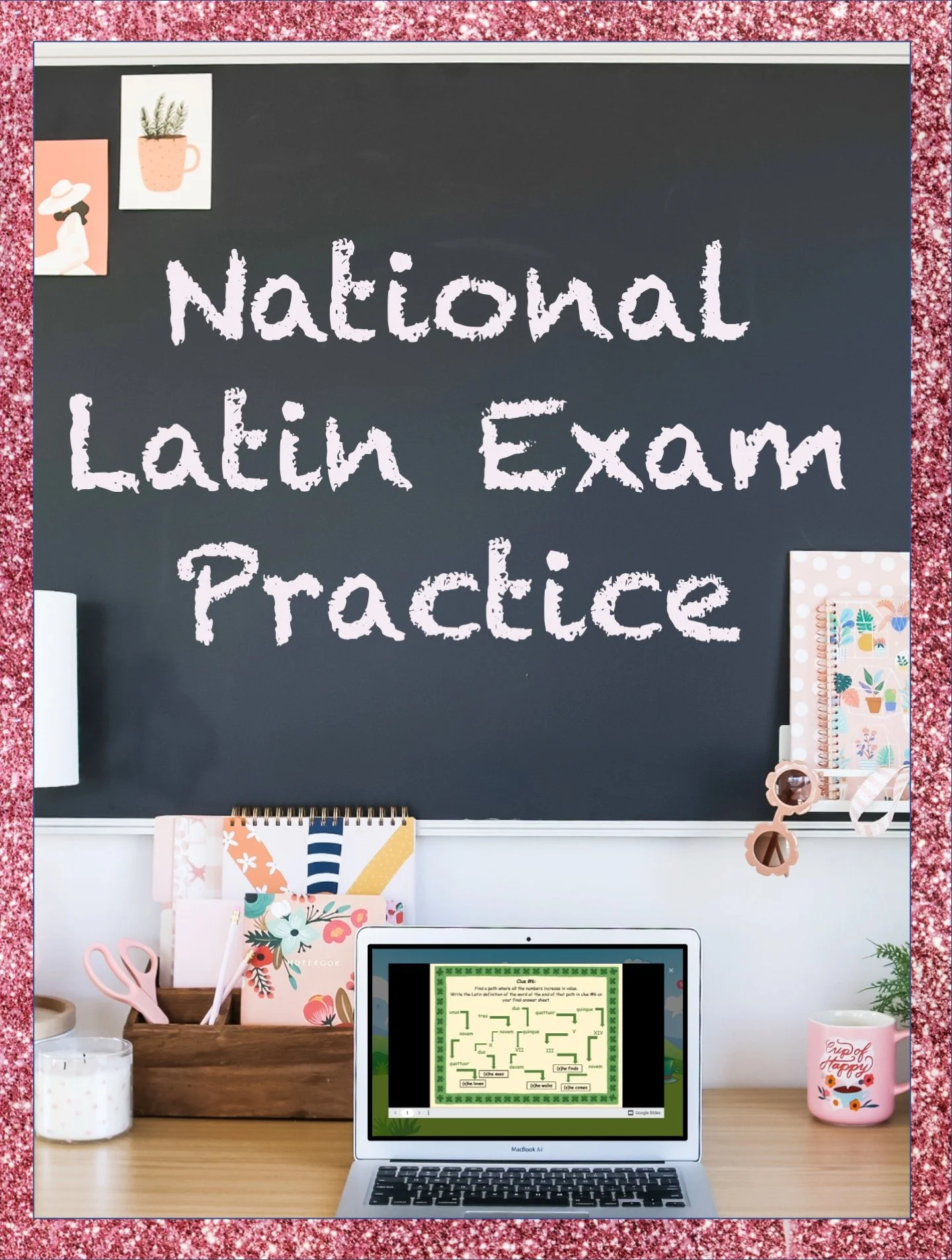Teaching Beginner Latin
Latin Teacher Resources: A Guide to Teaching Beginner Latin
Latin is a language that has stood the test of time. It may not be spoken commonly in everyday conversation, but its influence is felt all around us. From legal terms to medical terminology, Latin is the foundation upon which many modern languages are built. That's why teaching Latin to middle school students is a valuable and rewarding experience. Whether you're a seasoned Latin teacher or a newcomer to the language, these resources will provide you with the tools and resources you need to help your beginner Latin students succeed.
Understanding the Needs of Beginner Latin learners
Before you start teaching Latin to your students, it's important to understand their needs. Beginner Latin learners are usually new to the language and may not have any prior knowledge of Latin or its grammar rules. While each textbook & curriculum has a different order of teaching verbs, nouns, functions, even comprehensible input, I want to outline what has worked for me. I have taught beginner Latin at the college, high school, and middle school level for a total of 11 years. Each pace nearly doubles: teaching the college level, we covered one chapter of Wheelock’s Latin every other day; at the high school level, we spent about one week on each Wheelock chapter. Now teaching at the middle school level, I have the luxury of taking my time and I cover a much smaller chunk of grammar and vocabulary each week. I currently align with Latin for the New Millennium, but my resources are suitable for any grammar-based beginner Latin textbook.
For beginner Latin students, my number 1 suggestion is teaching through guided notes. Here is an example of what mine look like. I have split my grammar-based guided notes into very small grammar sections, since my school covers one year of high school Latin in two middle school beginner Latin years. I think guided notes are effective because students are forced to copy down the most crucial information (I’ll never forget my first week teaching high school Latin and being shocked that half the class wasn’t taking notes while I covered grammar instruction 😂)
It's important to keep in mind that Latin is a challenging language to learn, so it's important to create a supportive and encouraging environment in the classroom. Encourage students to ask questions and offer personalized support when needed.
Lesson Planning for Beginner Latin students
When planning your lessons, make sure to incorporate a variety of activities to keep your students engaged. For example, I like incorporating at least 3 segments into any class that is 45-50 minutes long. I use notes, games, and story translations most regularly to help students learn the language. It's also important to make sure that your lessons are structured and consistent– younger & beginner students benefit from a consistent routine!
Teaching Latin Grammar and Vocabulary
Teaching grammar and vocabulary is a crucial part of teaching Latin to beginner middle school students. It's important to start with the basics, such as nouns, verbs, and adjectives, and gradually introduce more complex concepts. When teaching grammar, make sure to provide clear examples and explanations. You can also use diagrams and charts to help students visualize grammar rules.
When teaching vocabulary, it's important to use a variety of methods to help students learn and remember new words. For example, you can use Quizlet, paper flashcards, word games (have you ever played “Sparkle”?!), and English Derivatives to help students practice vocabulary.
Fun and Engaging Technology-Based Activities for Beginner Latin Classes
Keeping students engaged in Latin class can be challenging, especially for beginners. That's why it's important to incorporate fun and engaging activities into your lessons. These activities can help students learn the language while also having fun.
Kahoot (I mostly use the “scramble” function for spelling vocabulary words!)
Most of these sites have databases of games created by other beginner Latin teachers so you can search before taking the time to create your own!
Hands-On & Non-Technology Activities for Beginner Latin Classes
Crossword puzzles to reinforce spelling and noun/verb endings
Vocabulary puzzles (Beginner Latin Vocabulary Puzzles here!)
White board games, such as Chutes & Ladders and Sink or Swim
Pictionary
Charades
Spoons
Bingo
Bingo is a classic game that can be easily adapted for language learning. In a beginner language class, students can have bingo cards with words or pictures in the target language. The teacher can then call out words or show pictures, and students must mark off the corresponding word or picture on their cards. This game helps students practice vocabulary recognition and listening skills, while also adding an element of competition and excitement to the classroom. It's a great way to engage students and make language learning fun and interactive.
Another way to make Latin class more engaging is to use real-world examples. For example, you can use Latin phrases and quotes from famous historical figures to help students better understand the language and its context. It’s also important to adapt to the interests of your students, while also playing to your own passions. Because my passion is etymology & English derivatives of Latin words, I feel that I am able to engage students with my energy whenever we focus on those topics. At the same time, if I have students interested in history or mythology, I try to engage with their interests as well.
Tips for Assessing Student Progress and Providing Feedback
Assessing student progress and providing feedback is crucial to helping students improve their language skills. I try to have a 24 hour turn-around time for grading assignments, but I’m not perfect. I do value that students want to learn from their mistakes! When providing feedback, make sure to be specific and provide constructive criticism.
It's also important to provide opportunities for students to practice their language skills in real-world scenarios. Flipgrid is great for this!
Finally, it's important to create a supportive and encouraging classroom environment. Encourage students to ask questions and provide personalized feedback to help them improve their language skills.
Teaching Latin to beginner middle school students can be a rewarding and challenging experience. By understanding your students' needs, selecting the right curriculum, incorporating fun and engaging activities, promoting participation and engagement, assessing student progress, and using the right resources, you can help your students succeed in learning Latin. With the right tools and resources, you can make Latin class an enjoyable and valuable experience for your students.
Beginner Latin Grammar Activities: Core Resources
Latin Guided Notes
Beginner Latin Stories
Latin Interactive Notebook
Latin Case Function Flip Books
Latin Case Exit Tickets
Beginner Latin Warm-Ups
Beginner Latin Grammar Activities: Bonus Resources
Roman Literature Authors with Passages & Questions
Ablative Case Activities
Beginner Latin Digital Escape Room
Click here to check out my beginner Latin Grammar Resources Bundle!
Here are some more of my favorite beginner Latin activities in the classroom: ice cream scoops to teach parts of a Latin sentence, Latin vocabulary/grammar puzzles, and Latin verb battleship!


